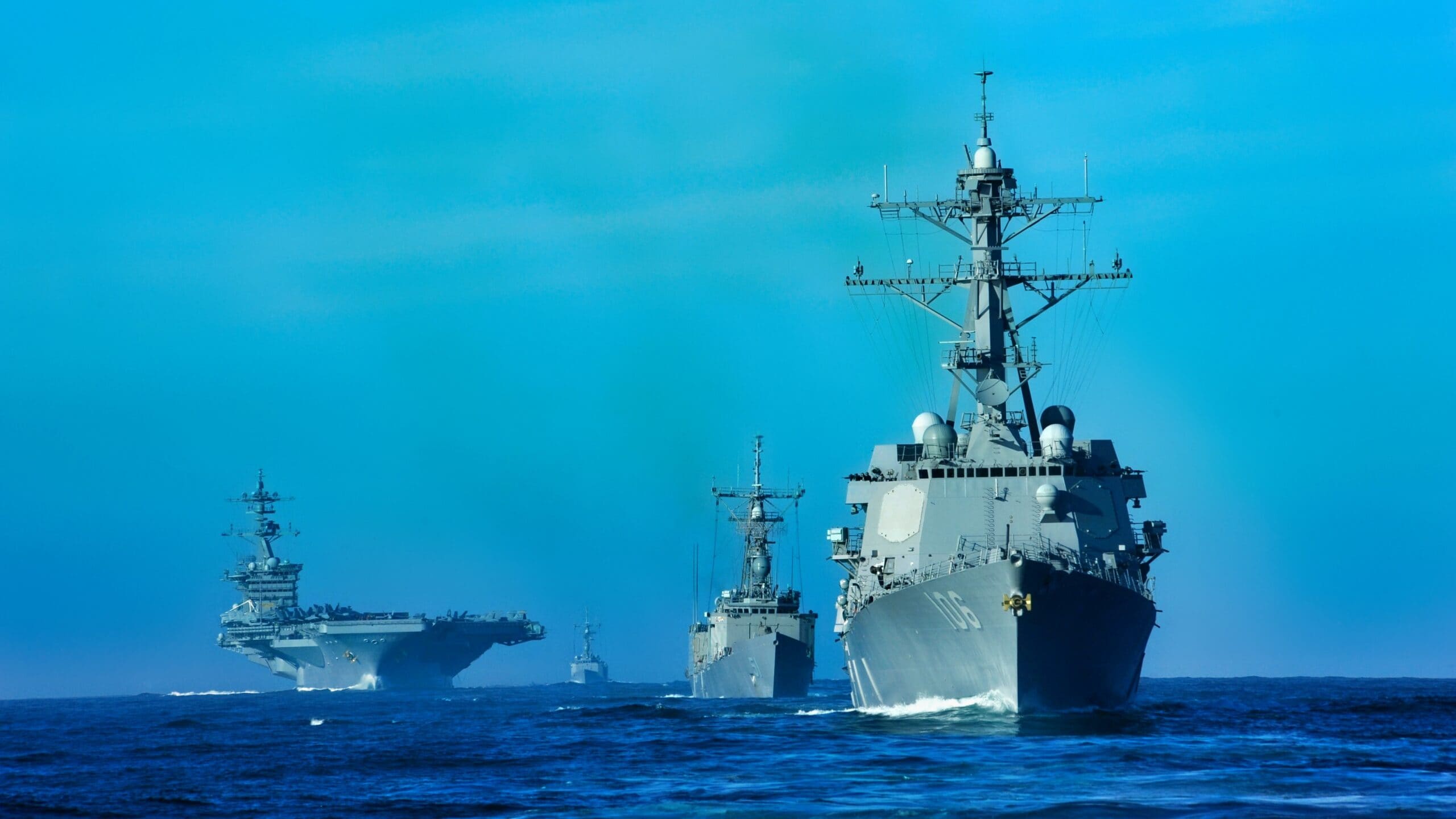The United States Navy is preparing for the contingency of a war with China and an invasion of Taiwan. And being so close to the Chinese coast, it is a daunting task. Can the United States operate effectively in an area where China has developed advanced anti-access/area-denial (A2/AD) systems?
These layered zones of denial are designed to keep American aircraft carrier battle groups and surface ships at arm’s length. The Chinese doctrine is to “dissuade, deter, or defeat” a third party’s intervention (US) into a large-scale, theater-wide campaign by the PLA (Taiwan).
The US has a limited combat radius for its carrier-borne aircraft without using many aerial refueling aircraft or drones. And would the aircraft carrier battle groups survive in a war so close to the Chinese coast where the Chinese have so many weapons to bear?
Fighting the Next War, Like the Last One, and The One Before That
Since World War II, the United States has used the aircraft carrier as a symbol of American might, power projection, and cultural icon.
When any adversary began to act too aggressively against the US or one of its allies, the United States would respond by sending a carrier task force to the region.
No one had any means of countering it, and Russia and China had nothing to match the power of the enormous mobile airfields from which the US could project power. It worked for eighty years, but as Bob Dylan said, “The times they are a-changing.” It is time for the US to change its strategy, especially regarding China.
Our potential adversaries couldn’t match the carrier’s power, so they devised a different approach.
China and Russia have developed advanced anti-access/area-denial (A2/AD) systems, as mentioned above, including hypersonic weapons designed to neutralize American carriers. The Chinese have developed missiles such as the DF-26B, which are called the “carrier killer” by the Chinese. They have also developed the DF-21D ballistic missiles.
With a range of 2,500 miles, the Chinese can cover the area around Taiwan with missiles, which can carry conventional or nuclear warheads. In 2021, the Chinese had 250 of these ballistic missiles. In 2022, that number rose to 500.
Each launcher carries two missiles, and with a swarm of these missiles and other weapons that may influence the battle, it could be challenging.
US Carrier Task Force’s Layered Defense
The US Navy knows what the threat from operating close to the Chinese coast will entail if (when) China invades Taiwan. Many (including here) have long written about the demise of the aircraft carrier. As far back as 1922, when the carrier’s power to project dominance wasn’t even realized, American military leaders had doubts about the carrier’s ability to survive in combat. So, all of it has to be taken with a big grain of salt.
The Navy’s layered defense, which includes interceptor missiles, precision-firing deck-mounted guns, and Aegis radar-enabled target tracking, will have to account for swarms of incoming missiles.
If effective, the carrier task force’s electronic warfare (EW) defenses could jam, disrupt, or disable many incoming missiles. The Navy can use forward-positioned air assets such as drones, armed drones, and even fighter jets to track and destroy attacking Chinese missiles from beyond the radar horizon. The Navy used this type of scenario in the Red Sea to defeat Houthi drones and missiles.
Next-generation Jammers (NGJs) can track several signals simultaneously and target individual missiles across various frequencies.
In 2023, a Rand paper said “multi-domain drone mimics” such as drone swarms could confuse Chinese targeting.
“Large numbers of low-cost, uncrewed air and maritime vehicles would confuse China’s battlespace awareness and complicate its ability to identify high-value targets. These drone mimics could also have the benefit of creating the perception of a larger coalition force, drawing Chinese forces to incorrect locations, or causing them to expend advanced munitions on false targets.”
How Will Aircraft Carriers Fare In a Taiwan Invasion?
The rise of anti-access/area-denial (A2/AD) means that the large surface warship’s days as the primary power projection in a naval fleet will have to be re-examined, especially with the increase of hypersonic weapons. In the case of Taiwan, it may prove disastrous. Despite all the defenses carriers have, they don’t yet have a defense against hypersonic weapons.
Timothy Heath, a senior international defense researcher at the RAND Corporation, a nonprofit research organization, said, “The military officers I’ve talked to said they have been planning for years to deploy carriers so far away from Taiwan that they’re out of range of the [Chinese] missiles, but frankly, also irrelevant to the combat,” Heath said.
“The bottom line is if the US is relying on carriers to save Taiwan, that’s a lost cause. It’s just not viable.”
What’s The Answer For the Navy?
In the increasingly likely war with the Chinese, perhaps the best way to beat China is to strangle its economy by partnering with friendly Asia-Pacific nations to ensure the US’s ability to interdict China’s energy and raw-material imports and industrial exports while protecting those nations. This strategy, called “Offshore Control,” plays to China’s weaknesses instead of its strengths.
Colonel T. X. Hammes, USMC (ret), wrote an intriguing paper on offshore control (OC). Operationally, OC establishes three distinct goals: 1. Deny China the use of the sea inside the first island chain; 2. Defend the sea and air space there; and 3. Dominate the air and maritime space outside the island chain.
With this strategy, there would be no campaign to penetrate Chinese airspace. Eliminating penetration reduces the possibility of either side resorting to nuclear escalation, dramatically reduces the cost of forces necessary to execute the strategy, and makes the end of conflict easier.
Rather than engaging Chinese A2/AD defenses so close to the Chinese shore, this forces China to send its limited number of long-range assets into US and Allied integrated air, sea, and land defenses. US submarines play a vital role in this type of campaign.
And for every Ford-class carrier built, two are currently in development; the US can build three Virginia-class submarines with the Virginia Payload Module (VPM), which is about $4.3 billion each. Those six Virginia-class subs would be sorely needed, but they don’t project much as they spend their time unseen under the waves.
This strategy will no doubt infuriate the vast number of carriers and large surface warship strategists. However, carriers and large surface warships are rapidly becoming part of the past. The US needs to adapt its naval strategy to the 21st Century.
US Navy Aircaft Carriers: A Photo Essay
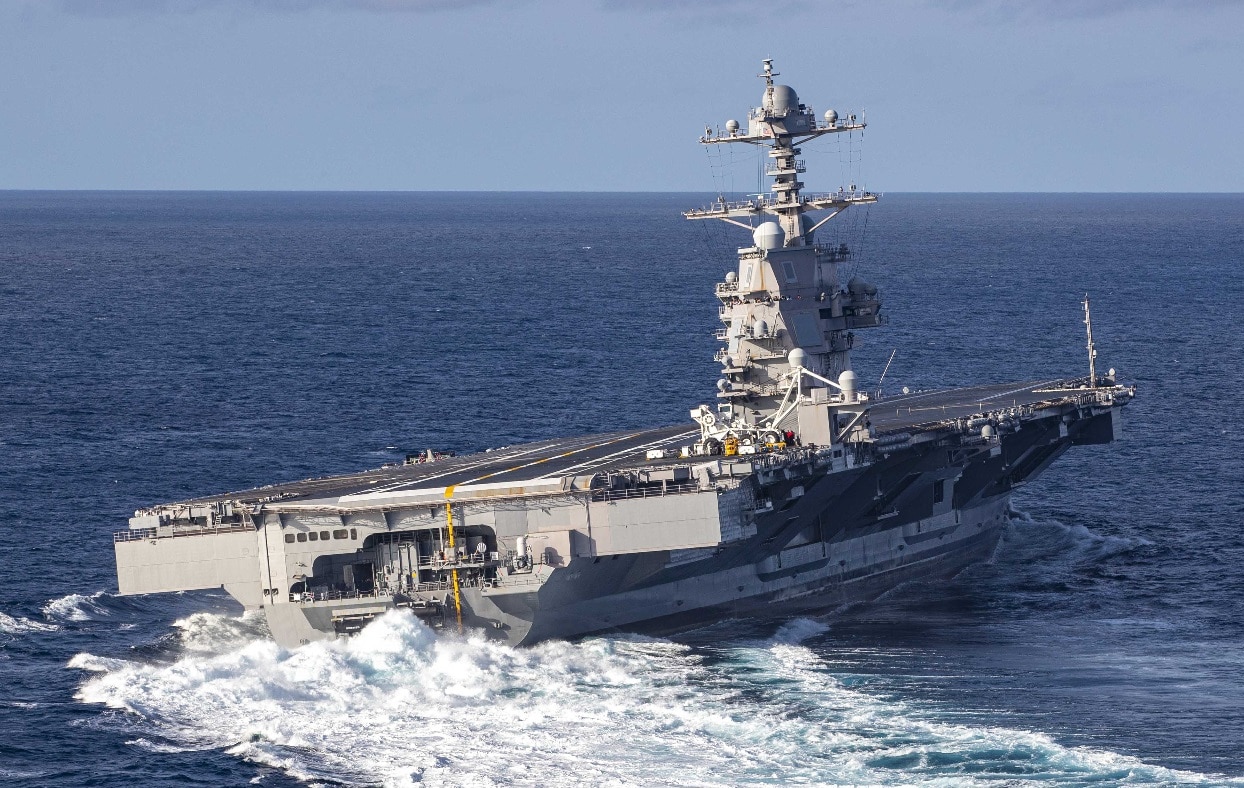
ATLANTIC OCEAN (Oct. 29, 2019) The aircraft carrier USS Gerald R. Ford (CVN 78) conducts high-speed turns in the Atlantic Ocean, Oct. 29, 2019. Gerald R. Ford is at sea conducting sea trials following the in port portion of its 15-month post-shakedown availability. (U.S. Navy photo by Mass Communication Specialist 3rd Class Connor Loessin/Released)191029-N-YW238-1322
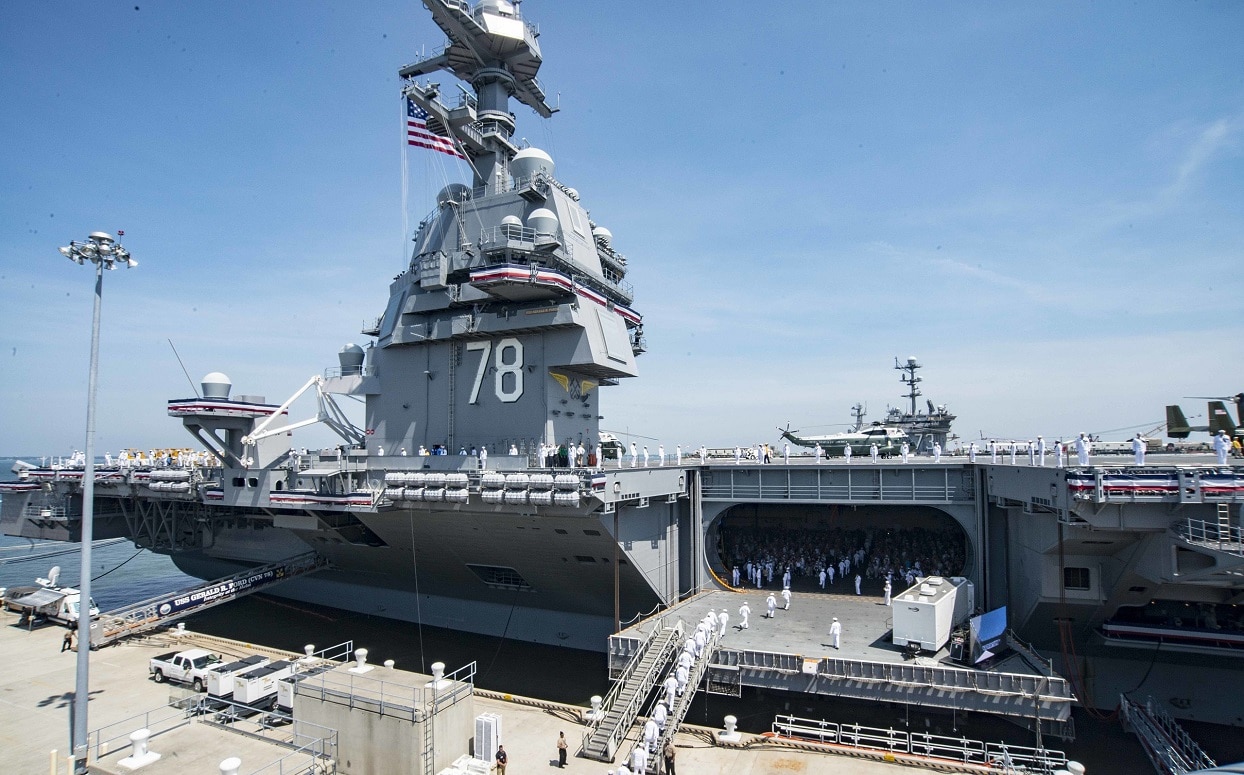
Gerald R. Ford-class. Image: Creative Commons.
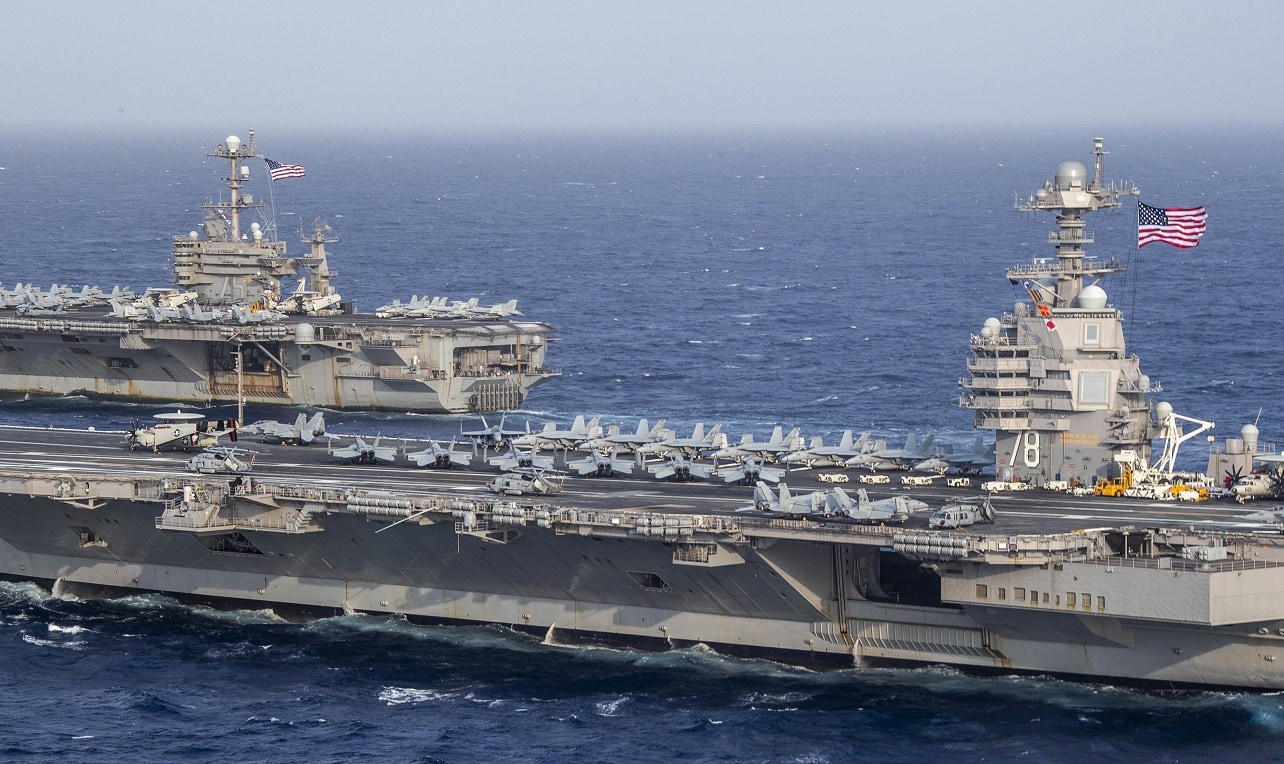
The Ford-class aircraft carrier USS Gerald R. Ford (CVN 78) and the Nimitz-class aircraft carrier USS Harry S. Truman (CVN 75) transit the Atlantic Ocean June 4, 2020, marking the first time a Ford-class and a Nimitz-class aircraft carrier operated together underway. Ford is underway conducting integrated air wing operations, and the Harry S. Truman Carrier Strike Group remains at sea in the Atlantic as a certified carrier strike group force ready for tasking in order to protect the crew from the risks posed by COVID-19, following their successful deployment to the U.S. 5th and 6th Fleet areas of operation. (U.S. Navy photo by Mass Communication Specialist Seaman Riley McDowell)
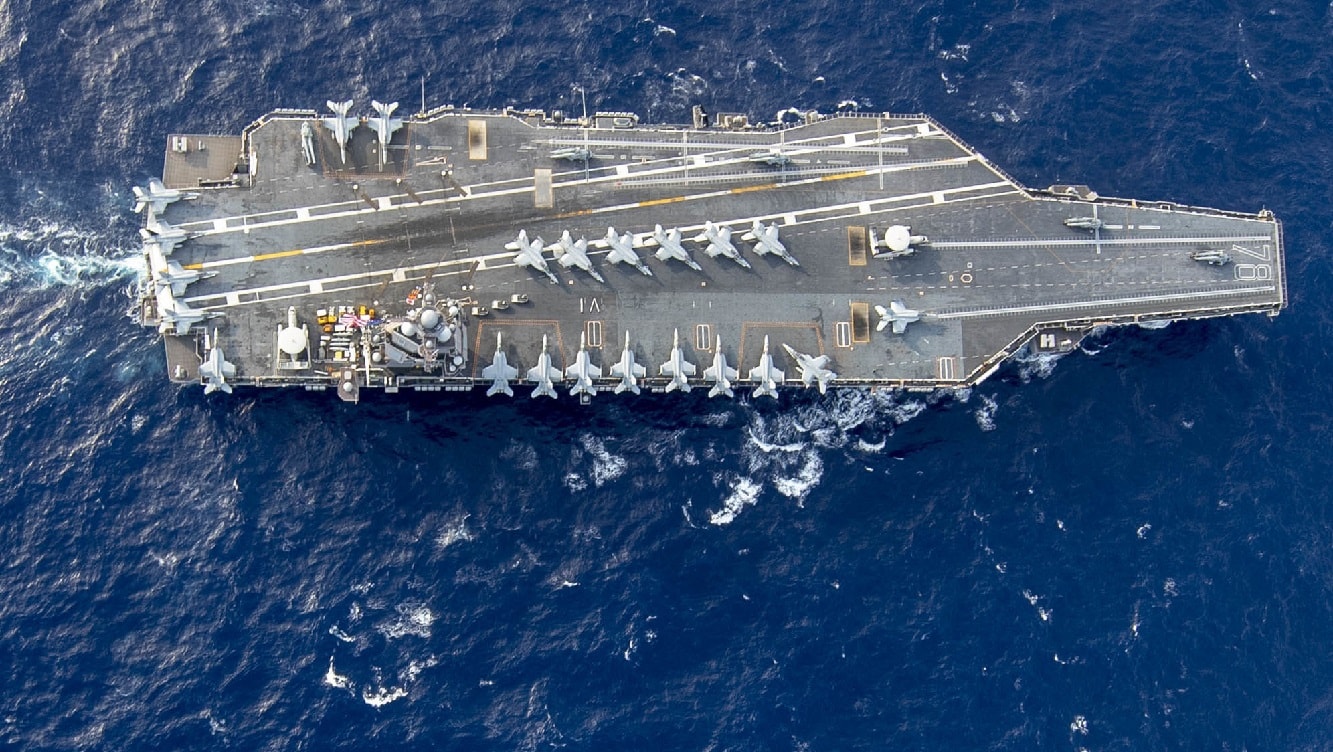
The Ford-class aircraft carrier USS Gerald R. Ford (CVN 78) and the Nimitz-class aircraft carrier USS Harry S. Truman (CVN 75) transit the Atlantic Ocean June 4, 2020, marking the first time a Ford-class and a Nimitz-class aircraft carrier operated together underway. Ford is underway conducting integrated air wing operations, and the Harry S. Truman Carrier Strike Group remains at sea in the Atlantic as a certified carrier strike group force ready for tasking in order to protect the crew from the risks posed by COVID-19, following their successful deployment to the U.S. 5th and 6th Fleet areas of operation. (U.S. Navy photo by Mass Communication Specialist Seaman Riley McDowell)
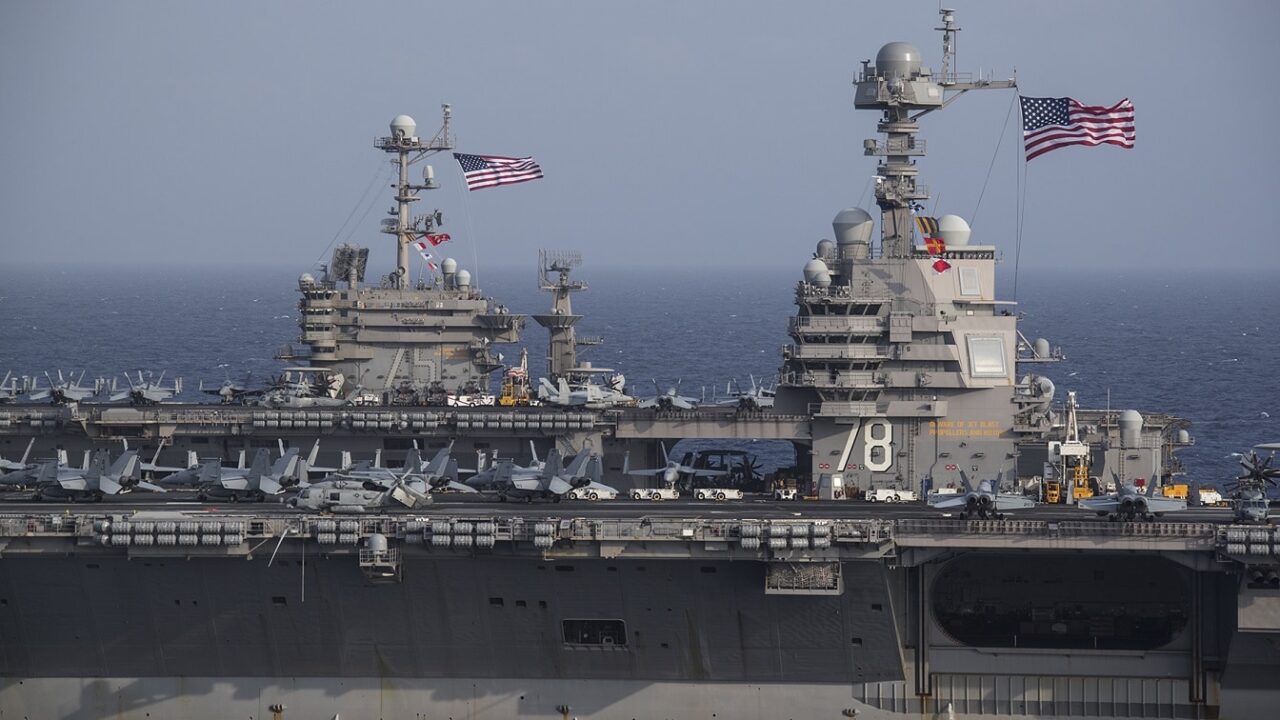
(June 4, 2020) The Ford-class aircraft carrier USS Gerald R. Ford (CVN 78) and the Nimitz-class aircraft carrier USS Harry S. Truman (CVN 75) transit the Atlantic Ocean, June 4, 2020, marking the first time a Ford-class and a Nimitz-class aircraft carrier have operated together underway. Gerald R. Ford is underway conducting integrated air wing operations and the Harry S. Truman Carrier Strike Group remains at sea in the Atlantic Ocean as a certified carrier strike group force ready for tasking in order to protect the crew from the risks posed by COVID-19, following their successful deployment to the U.S. 5th and 6th Fleet areas of operation. (U.S. Navy photo by Mass Communication Specialist 2nd Class Ruben Reed/Released
About the Author: Steve Balestrieri
Steve Balestrieri is a 19FortyFive National Security Columnist. He served as a US Army Special Forces NCO and Warrant Officer. In addition to writing for 19FortyFive, he covers the NFL for PatsFans.com and is a member of the Pro Football Writers of America (PFWA). His work was regularly featured in other military publications.

